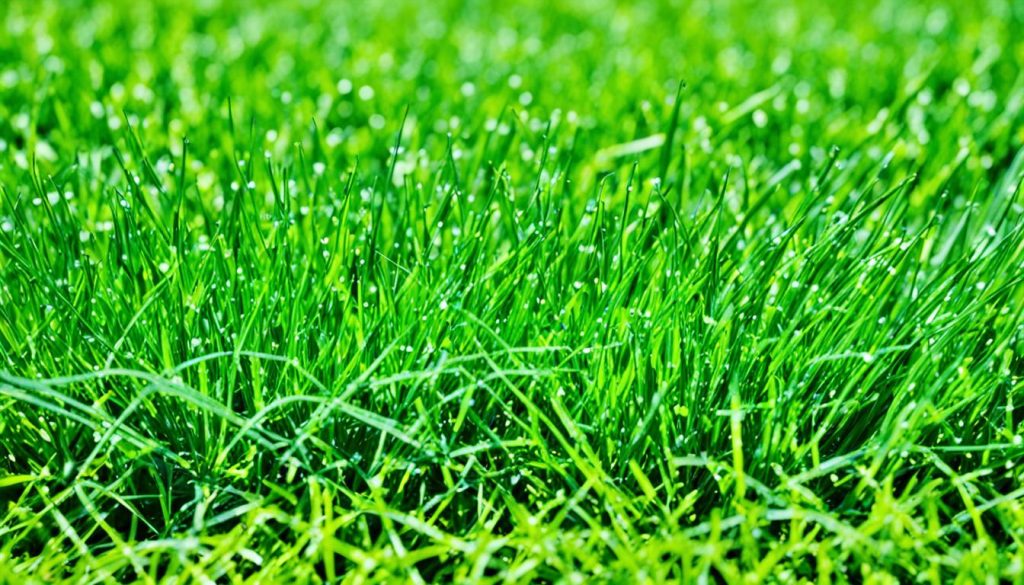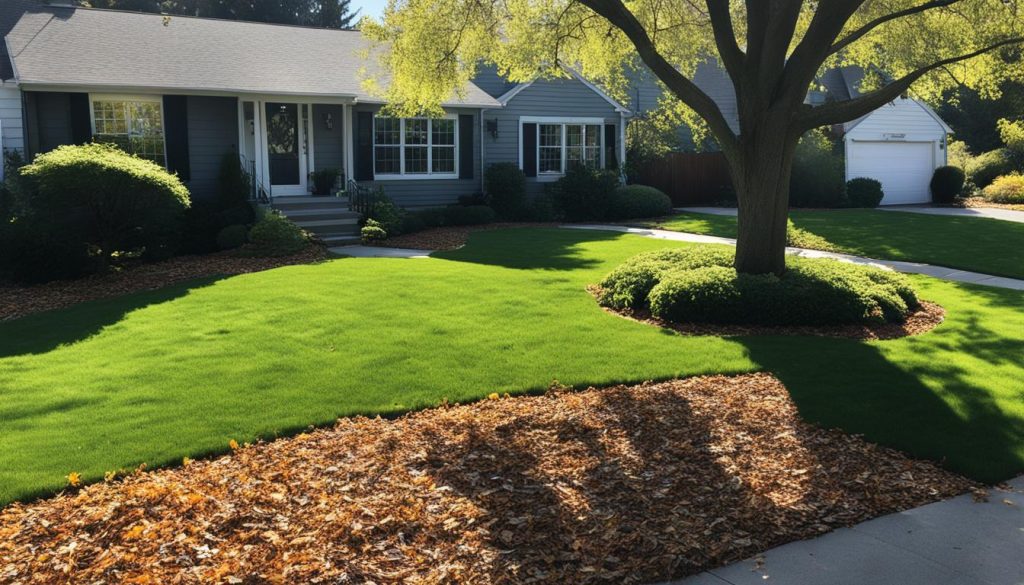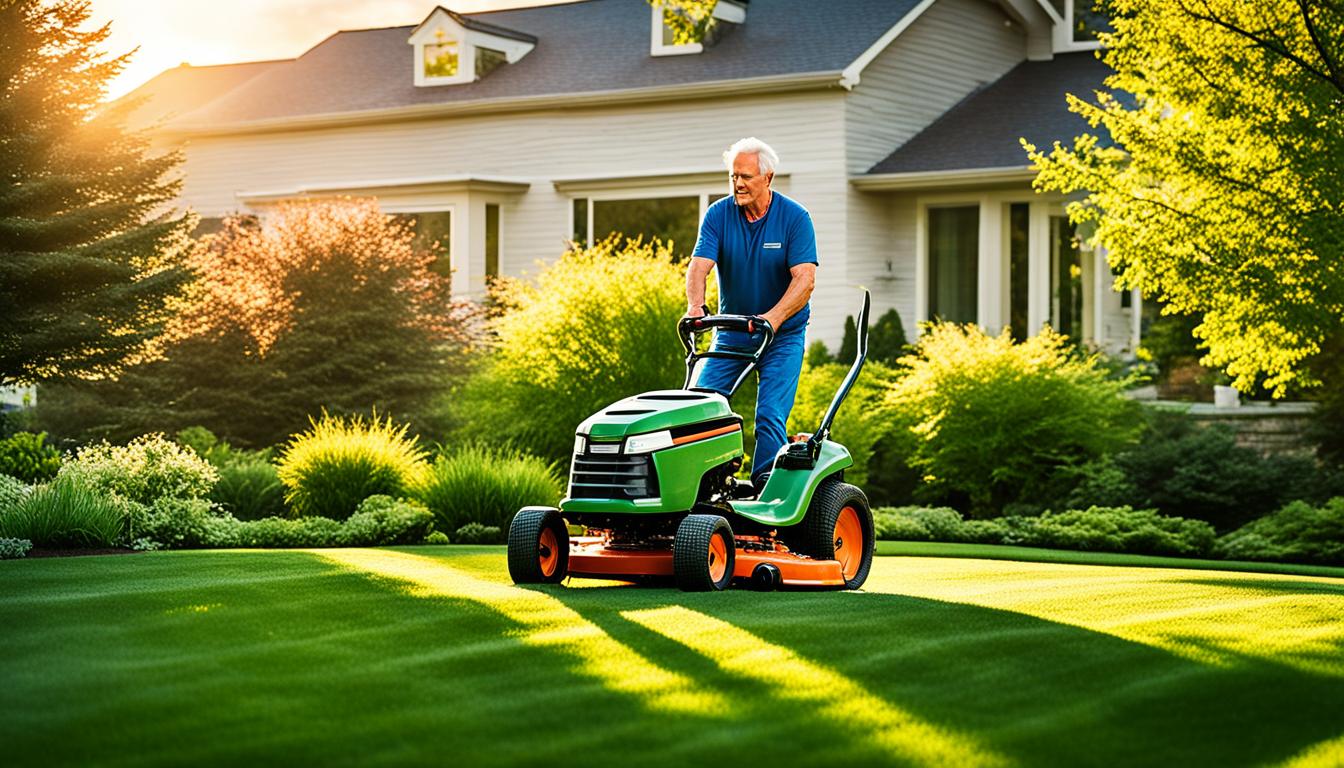Have you ever wondered how long it takes to mow a lawn? Is there a set duration that applies to all lawns, or does it vary depending on certain factors? If you’ve been searching for the answers, look no further. In this article, we’ll explore the factors that influence the duration of lawn mowing and provide valuable insights into best practices for optimal mowing time. Get ready to uncover the secrets behind achieving the perfect lawn maintenance routine!
Key Takeaways:
- The time it takes to mow a lawn depends on various factors such as lawn size, mower size, mower type, mowing speed, and lawn conditions.
- Estimating the size of the lawn in acres can help determine the time needed to complete the mowing.
- A larger mower deck allows for a larger swath of grass to be cut in a single pass, reducing mowing time.
- Different types of mowers, such as push mowers, walk-behind mowers, and zero-turn mowers, offer different average speeds that affect mowing time.
- The presence of obstacles, curves, hills, overgrown patches, and muddy areas can increase the time it takes to mow a lawn.
Factors Influencing Lawn Mowing Duration
The duration of lawn mowing is influenced by several factors that contribute to the overall time it takes to complete the task. These factors include the size of the lawn, the size of the mower, the type of mower used, the mowing speed, and the current conditions of the lawn.
Firstly, the size of the lawn plays a significant role in determining the mowing duration. Larger lawns will naturally require more time to mow compared to smaller ones. The acreage of the lawn provides a rough estimation of the time needed to complete the mowing process.
The size of the mower is another important factor to consider. Mowers with wider deck widths can cut a larger swath of grass in a single pass, reducing the overall mowing time. Additionally, mowers with more powerful engines tend to be more efficient in completing the job swiftly.
The type of mower used also affects the mowing duration. Different types, such as push mowers, lawn tractors, and zero-turn mowers, have varying average speeds. The choice of the right mower type based on the lawn size and terrain can significantly impact the time it takes to complete the mowing process.
Another crucial factor is the mowing speed. The speed at which the mower is operated directly affects the duration of the task. It is essential to find a balance between a reasonable speed and maintaining the quality of the lawn. Mowing too quickly can result in a subpar cut, while mowing too slowly can unnecessarily prolong the process.
Lastly, the current conditions of the lawn also play a role in determining the mowing duration. Lawns with obstacles, curves, hills, overgrown patches, or muddy areas may require more time to navigate and mow effectively.
Factors Influencing Lawn Mowing Duration
| Factors | Influence on Mowing Duration |
|---|---|
| Lawn Size | Determines the overall time required for mowing. Larger lawns take longer to mow compared to smaller ones. |
| Mower Size | Larger deck widths and more powerful engines can reduce mowing time by allowing for a wider cutting swath and improved efficiency. |
| Mower Type | Different mower types have varying average speeds, affecting the overall mowing duration. Selecting the right mower type based on the lawn’s characteristics can optimize efficiency. |
| Mowing Speed | The speed at which the mower is operated influences the mowing duration. Striking a balance between speed and quality is crucial for optimal results. |
| Lawn Conditions | Obstacles, curves, hills, overgrown patches, and muddy areas can increase mowing time due to the need for careful navigation and additional attention. |
How Lawn Size Affects Mowing Time
The size of the lawn plays a crucial role in determining the time required for mowing. As a general rule, larger lawns necessitate more mowing time. The acreage of the lawn can be used to estimate the duration needed to complete the mowing process accurately.
Mowing Time Estimation
When it comes to estimating the mowing time for a given lawn size, considering the acreage is essential. The larger the lawn’s size in acres, the more time it will take to mow. This estimation can help homeowners and lawn care professionals plan their schedules accordingly and allocate the appropriate amount of time for mowing.
Mowing Pace
The pace at which one mows also depends on the lawn size. A larger lawn usually requires a slower mowing pace to ensure thorough and efficient coverage. Rushing through the mowing process on a large lawn may result in missed areas or an uneven finish.

Note: The image illustrates the importance of maintaining an appropriate mowing pace to achieve optimal results.
Impact of Mower Size on Mowing Time
The size of the mower deck plays a crucial role in determining the amount of time required to mow a lawn. A larger deck enables the mower to cover a wider area of grass in a single pass, resulting in reduced mowing time. This is due to the mower’s ability to cut a larger swath of grass with each sweep.
Mower size is typically measured by the deck width, which refers to the distance between the outer edges of the cutting blades. The wider the deck, the larger the area the mower can cover in one go. For example, a mower with a deck width of 50 inches will be able to cut a wider strip of grass compared to a mower with a deck width of 42 inches.
Additionally, a larger deck width translates to a greater mowing swath, which is the area of grass that the mower can cut at each pass. A wider swath means that more grass is being cut, reducing the overall mowing time required.
It’s important to note that the size of the mower deck alone is not the sole factor in determining mowing time. The engine power of the mower also plays a significant role. Mowers with larger decks often require engines with higher power to efficiently cut through the larger swaths of grass. A more powerful engine enables the blades to maintain a consistent cutting speed, further enhancing mowing efficiency.
In summary, choosing a mower with a larger deck size can lead to increased mowing efficiency and reduced overall mowing time. By covering a wider area and employing a more powerful engine, these mowers enable homeowners to complete their lawn maintenance tasks more quickly and efficiently.
Influence of Mower Type and Speed on Mowing Time
When it comes to lawn mowing, the type of mower and its speed play a crucial role in determining the overall mowing time. Different mower types, such as push mowers, lawn tractors, and zero-turn mowers, have varying average speeds that directly impact the efficiency of the mowing process.
Push mowers, as the name suggests, require manual effort to push them across the lawn. While they may have a smaller cutting width compared to other types, they can still offer decent mowing speeds, especially when powered by efficient engines.
Lawn tractors, on the other hand, provide a more comfortable and efficient mowing experience. With their larger cutting decks and higher engine power, they can cover more ground in less time, resulting in faster mowing speeds.
Zero-turn mowers are known for their exceptional maneuverability, making them perfect for large lawns with many obstacles. These mowers can turn on a dime, allowing for quick direction changes without losing mowing speed. They often have wider cutting decks and powerful engines, enabling them to maintain higher average speeds and reduce mowing time significantly.
To provide a better understanding, here are the average speeds for each mower type:
| Mower Type | Average Mowing Speed (mph) |
|---|---|
| Push Mower | 3-4 mph |
| Lawn Tractor | 5-8 mph |
| Zero-Turn Mower | 8-13 mph |
It’s important to note that these speeds are just averages and can vary based on factors such as lawn conditions, operator skill, and machine maintenance.
By choosing the right mower type and utilizing its optimal speed, homeowners can significantly reduce their mowing time and make the process more efficient.
Optimizing Mowing Speed
While each mower type has its average speed range, it’s essential to find the right balance between speed and maintaining quality mowing. Mowing too quickly can result in missed patches and uneven cuts, leading to a less aesthetically pleasing lawn.
Here are some tips to optimize mowing speed:
- Know your mower’s capabilities and adhere to its recommended speed range.
- Regularly maintain your mower by sharpening blades and keeping it in proper working condition, ensuring efficient cutting.
- Consider the terrain and lawn conditions to adjust the mowing speed accordingly. For example, slower speeds may be required on rough terrains or when dealing with dense grass.
- Practice consistent and smooth mowing patterns, taking care to overlap each pass slightly to avoid missing spots.
- Be mindful of safety and avoid excessive speeds that could compromise control and pose a risk.
By following these tips and adapting to the specific requirements of each mowing session, you can achieve the optimal mowing speed that balances efficiency and the maintenance of a well-groomed lawn.
Considerations for Lawn Conditions
Lawn conditions play a significant role in determining the time it takes to mow. The presence of various factors such as obstacles, curves, hills, overgrown patches, and muddy areas can pose challenges and increase the overall mowing time required to achieve a well-maintained lawn.
When encountering obstacles such as trees, shrubs, or flower beds, additional time and care are needed to maneuver around them without causing any damage. The presence of curves in the lawn may require slower and more precise movements to ensure an even cut and a neat appearance.
Hills can also impact mowing time, as they require more effort to navigate and safely mow. Depending on the steepness of the hills, it may be necessary to use a different mowing technique or specialized equipment.
Overgrown patches are another factor to consider. These areas may require multiple passes or adjustments in cutting height to achieve an even appearance. Additionally, muddy areas can make mowing more challenging, as the mower’s traction may be compromised, resulting in slower progress.
Table 6: Impact of Lawn Conditions on Mowing Time
| Lawn Condition | Impact on Mowing Time |
|---|---|
| Obstacles | Increased maneuvering time and possible adjustments to avoid damage. |
| Curves | Slower mowing speed to maintain a neat appearance. |
| Hills | Requires additional effort and specialized techniques for safe and efficient mowing. |
| Overgrown Patches | Extended mowing time due to multiple passes or adjustments in cutting height. |
| Muddy Areas | Reduced traction resulting in slower progress and potential obstacles. |

It is essential to carefully assess the lawn conditions before starting the mowing process. By being aware of the potential challenges and planning accordingly, one can ensure a more efficient and effective mowing experience.
Estimating Mowing Time for Different Mower Sizes
When it comes to mowing a lawn, the time it takes can vary depending on factors such as lawn size, mower type, and mowing speed. One important consideration is the size of the mower itself. Different mower sizes have different mowing times for a given lawn size, so it’s essential to consider the specific mower size when estimating the time needed to complete the mowing.
To illustrate the variations in mowing time based on mower sizes, we’ve compiled a table showcasing typical mowing durations for different mower sizes:
| Mower Size | Typical Mowing Duration |
|---|---|
| 30-inch deck width | 1 hour |
| 42-inch deck width | 1.5 hours |
| 54-inch deck width | 2 hours |
| 60-inch deck width | 2.5 hours |
Keep in mind that these durations are estimates and can vary depending on factors such as mower efficiency, mowing speed, and lawn conditions. However, the table provides a general idea of the time needed based on different mower sizes.
It’s worth noting that larger mower sizes with wider deck widths can cover more ground in a single pass, resulting in reduced mowing time. However, the choice of mower size should also consider the practicality and maneuverability required for your specific lawn.
Choosing the Right Mower for Efficiency
When it comes to achieving optimal mowing efficiency, selecting the right mower is crucial. Different types of mowers cater to varying lawn sizes and terrain, offering unique benefits to enhance your mowing experience.
Push Mowers
Push mowers are an excellent choice for small lawns. Their compact design allows for easy maneuverability, making it simple to navigate tight spaces and corners. With their lightweight construction, push mowers are also perfect for those who prefer a more physically active approach to lawn maintenance. These mowers provide a precise cut, leaving your lawn looking neat and well-groomed.
Walk-Behind Mowers
For homeowners seeking a balance between physical activity and efficiency, walk-behind mowers offer the perfect solution. These mowers come equipped with various cutting mechanisms, including mulching, bagging, and side discharge options. Whether you have a medium-sized or large lawn, walk-behind mowers provide consistent and even cutting results. With their wider cutting decks, you can cover more ground with each pass, saving time and effort.
Stand-On Mowers
When it comes to larger lawns, stand-on mowers, particularly zero-turn mowers, are the go-to choice for optimal efficiency. These mowers are renowned for their exceptional speed and maneuverability, allowing you to swiftly navigate around obstacles and turn effortlessly. Equipped with powerful engines and wider cutting decks, stand-on mowers ensure the job gets done quickly and efficiently, even on extensive properties.
No matter the size of your lawn, choosing the right mower is essential for achieving optimal mowing efficiency. Consider the specific needs of your lawn, as well as factors such as physical exertion, maneuverability requirements, and overall speed. By selecting the right mower for your needs, you can ensure a beautifully maintained lawn without compromising on efficiency.
Expert Tips for Optimal Lawn Mowing Duration
To achieve optimal lawn mowing duration, there are several expert tips that can help you make the most of your mowing sessions. By following these tips, you can ensure a well-maintained lawn without wasting unnecessary time or effort.
1. Keep Your Blades Sharp
One of the most important factors for efficient mowing is to have sharp blades on your mower. Dull blades can tear the grass instead of cleanly cutting it, leading to an uneven appearance and potential damage to the lawn. Regularly sharpening your mower blades will result in cleaner cuts and reduce the need for multiple passes.
2. Maintain a Proper Mowing Speed
It’s crucial to find the right balance between speed and precision while mowing your lawn. Moving too quickly may cause you to miss areas or leave behind uncut patches, while going too slow can prolong the process unnecessarily. Experiment with different speeds to find the optimal pace for your lawn, ensuring that you maintain a consistent and steady speed throughout.
3. Avoid Damage to your Lawn
Proper technique is vital to prevent damage while mowing. Avoid cutting your grass too short, as this can weaken the root system and make the lawn more susceptible to drought and disease. Additionally, be mindful of the weight of your mower, especially when maneuvering on soft or wet ground, to avoid compaction or ruts.
4. Employ Efficient Mowing Techniques
Efficient mowing techniques can significantly reduce the time it takes to complete the task. One technique is the “striping” method, where you mow in alternating straight lines to create a visually appealing pattern on your lawn. Additionally, mowing in overlapping rows can help ensure thorough coverage and prevent the need for additional passes.
| Expert Tips for Optimal Lawn Mowing Duration | Description |
|---|---|
| Keep Your Blades Sharp | Regularly sharpen your mower blades for clean cuts and efficiency. |
| Maintain a Proper Mowing Speed | Find the right balance between speed and precision for efficient mowing. |
| Avoid Damage to Your Lawn | Use proper technique to prevent damage to your grass and soil. |
| Employ Efficient Mowing Techniques | Utilize techniques like striping and overlapping rows for optimal coverage and time-saving. |
By implementing these expert tips, you can ensure that your lawn mowing sessions are efficient and productive, allowing you to enjoy a well-maintained lawn without spending excessive time or effort.
Image: A lawn being mowed using proper techniques for optimal duration.
Conclusion
In conclusion, achieving optimal lawn mowing duration relies on considering several important factors. The size of the lawn, the size of the mower, the type of mower, the mowing speed, and the conditions of the lawn all play a crucial role in determining the time it takes to mow. By carefully evaluating these factors and selecting the right mower for the job, individuals can maximize efficiency and productivity in their lawn maintenance routines.
When it comes to lawn size, larger lawns naturally require more time for mowing. Estimating the size of the lawn in acres can provide a helpful guideline for estimating the duration. Mower size also influences mowing time, with larger mower decks allowing for cutting larger swaths of grass in a single pass, reducing overall mowing time.
Choosing the appropriate mower type is another key consideration. Push mowers are suited for smaller lawns, while walk-behind mowers strike a balance between efficiency and physical activity. Stand-on mowers, such as zero-turn mowers, offer increased speed and maneuverability, making them ideal for larger lawns.
Ultimately, by carefully assessing the various factors involved and selecting the right mower for the specific lawn conditions, individuals can achieve optimal efficiency in their lawn mowing endeavors and maintain a pristine and well-manicured yard.





